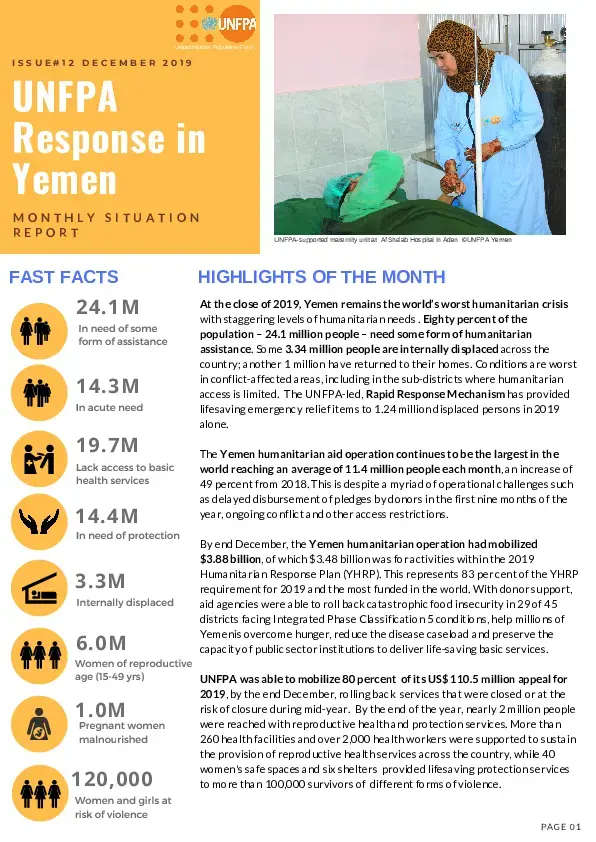At the close of 2019, Yemen remains the world’s worst humanitarian crisis with staggering levels of humanitarian needs . Eighty percent of the population – 24.1 million people – need some form of humanitarian assistance. Some 3.34 million people are internally displaced across the country; another 1 million have returned to their homes. Conditions are worst in conflict-affected areas, including in the sub-districts where humanitarian access is limited. The UNFPA-led, Rapid Response Mechanism has provided lifesaving emergency relief items to 1.24 million displaced persons in 2019 alone.
The Yemen humanitarian aid operation continues to be the largest in the world reaching an average of 11.4 million people each month, an increase of 49 percent from 2018. This is despite a myriad of operational challenges such as delayed disbursement of pledges by donors in the first nine months of the year, ongoing conflict and other access restrictions.
By end December, the Yemen humanitarian operation had mobilized$3.88 billion, of which $3.48 billion was for activities within the 2019 Humanitarian Response Plan (YHRP). This represents 83 per cent of the YHRP requirement for 2019 and the most funded in the world. With donor support, aid agencies were able to roll back catastrophic food insecurity in 29 of 45 districts facing Integrated Phase Classification 5 conditions, help millions of Yemenis overcome hunger, reduce the disease caseload and preserve the capacity of public sector institutions to deliver life-saving basic services.
UNFPA was able to mobilize 80 percent of its US$ 110.5 million appeal for 2019, by the end December, rolling back services that were closed or at the risk of closure during mid-year. By the end of the year, nearly 2 million people were reached with reproductive health and protection services. More than 260 health facilities and over 2,000 health workers were supported to sustain the provision of reproductive health services across the country, while 40 women's safe spaces and six shelters provided lifesaving protection services to more than 100,000 survivors of different forms of violence.


